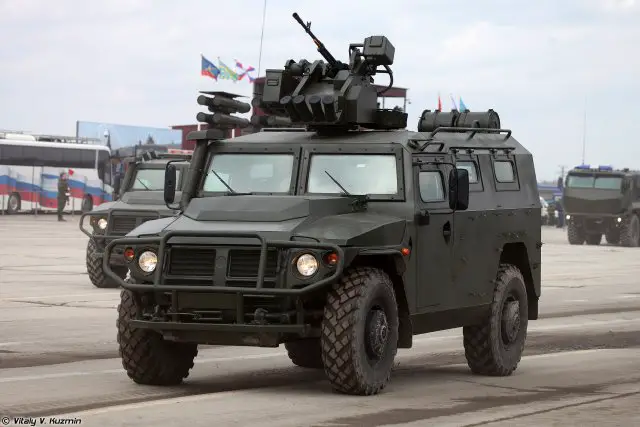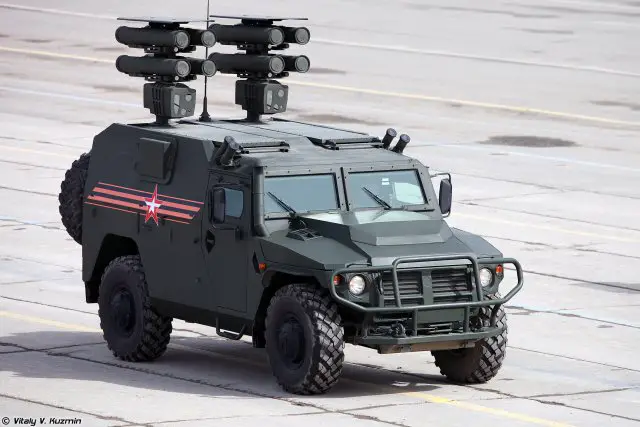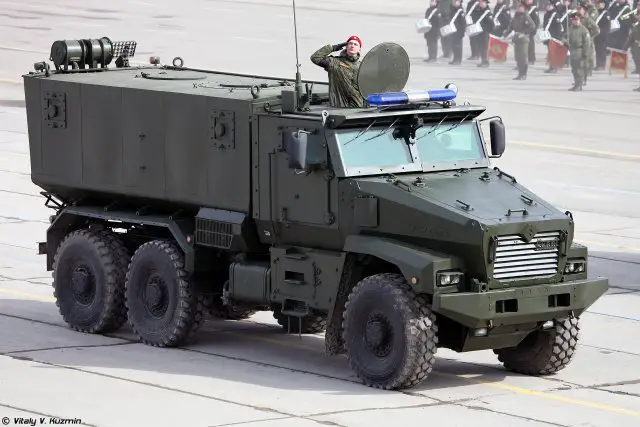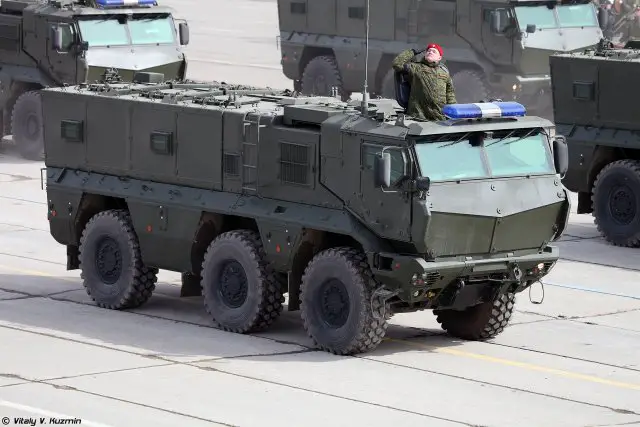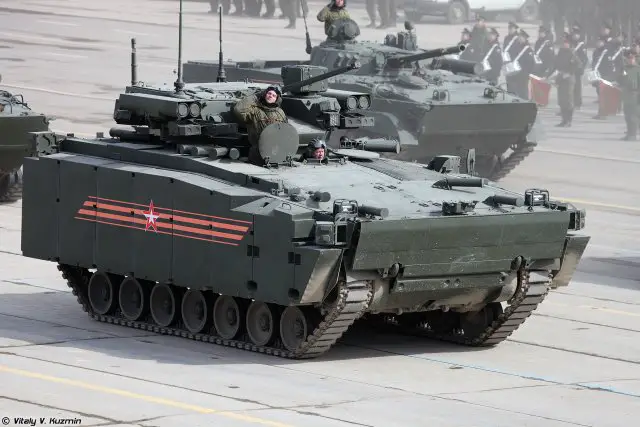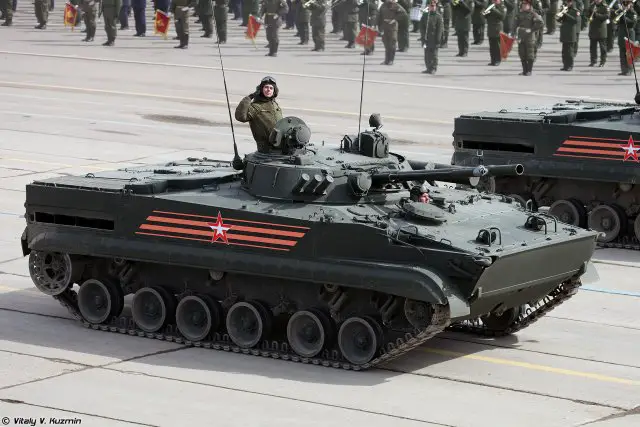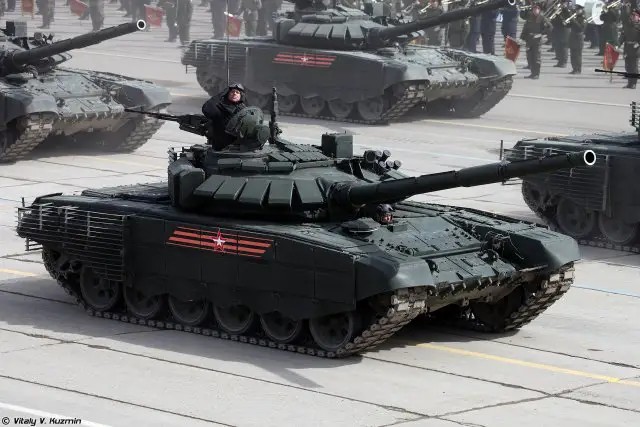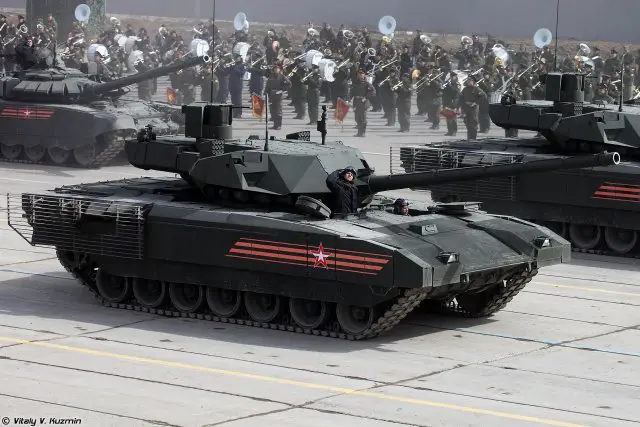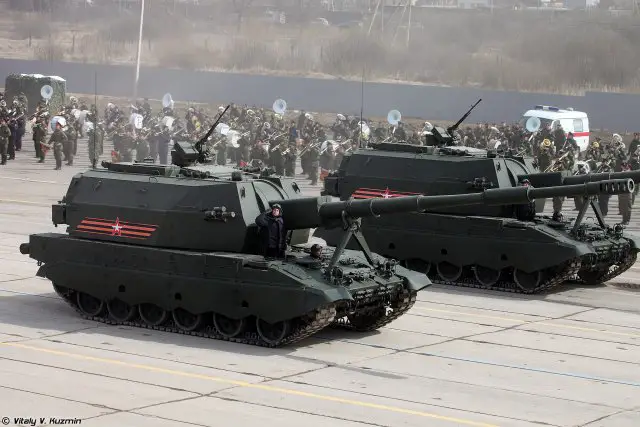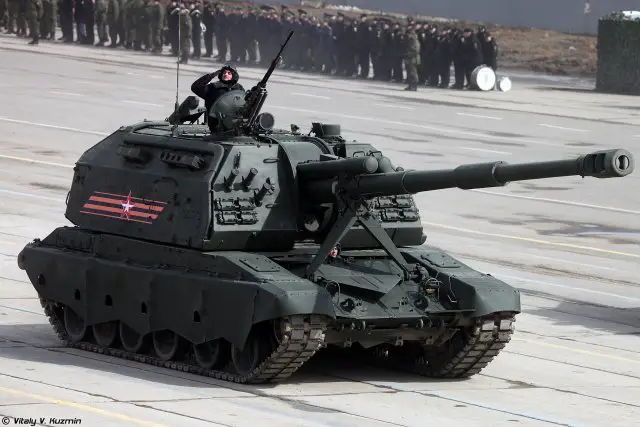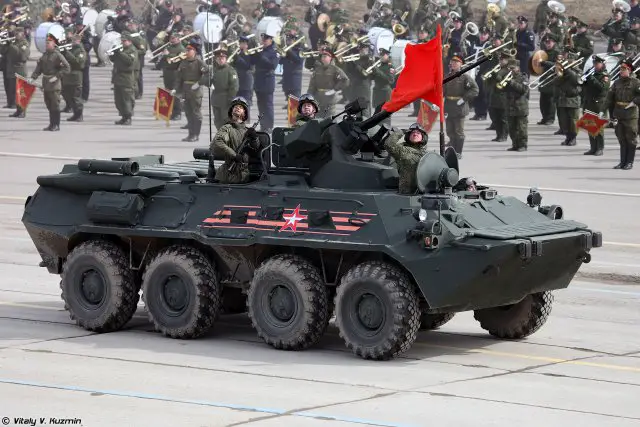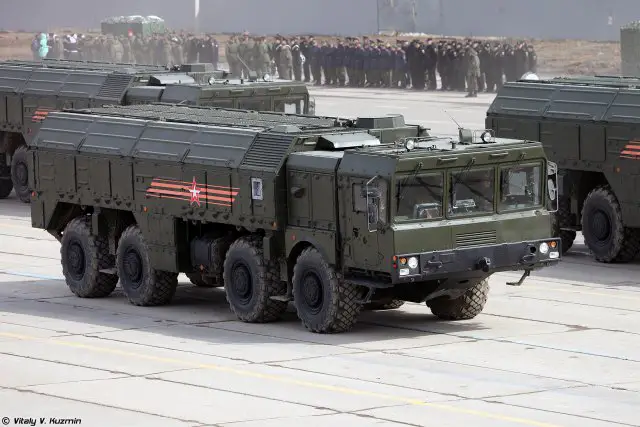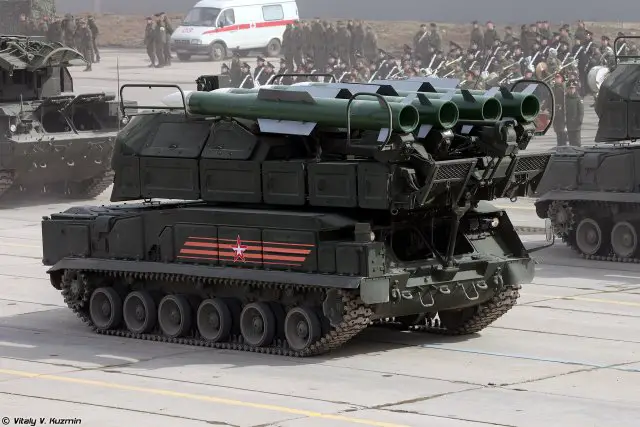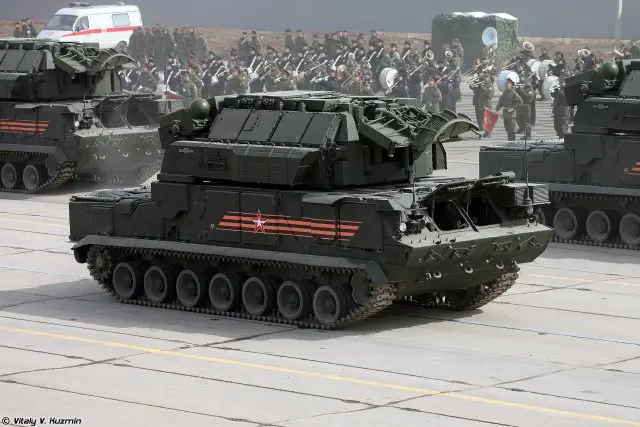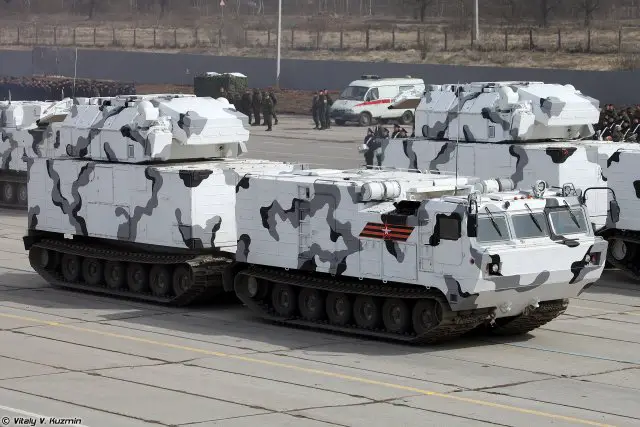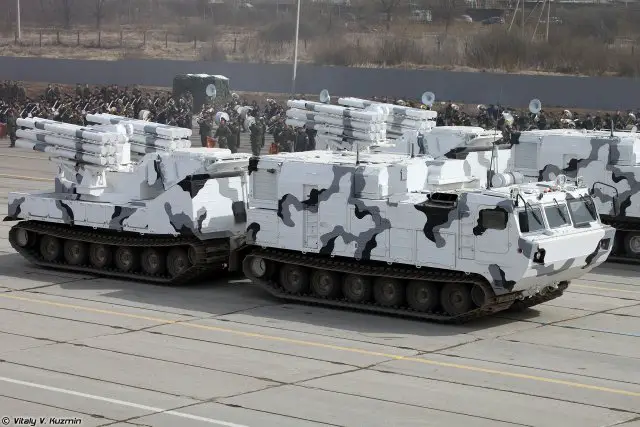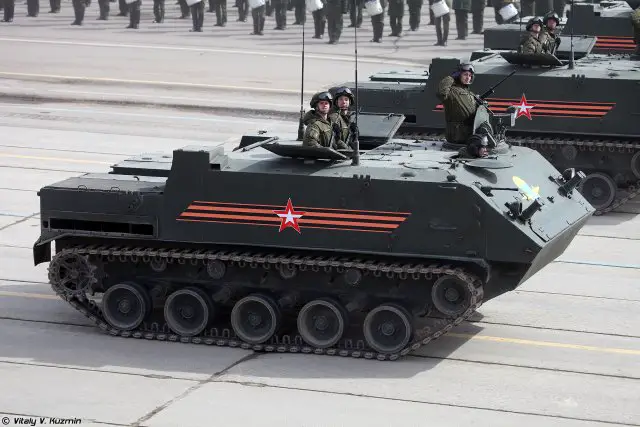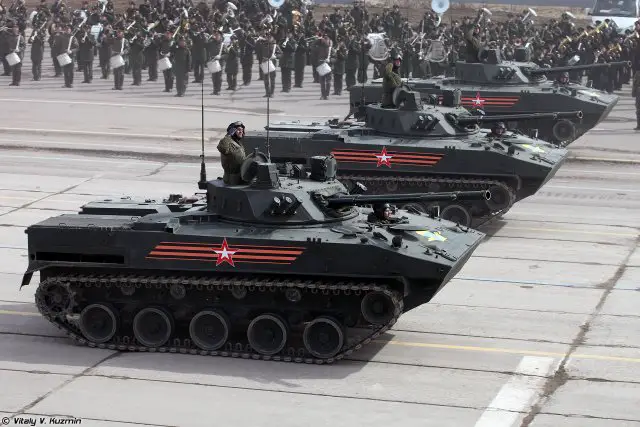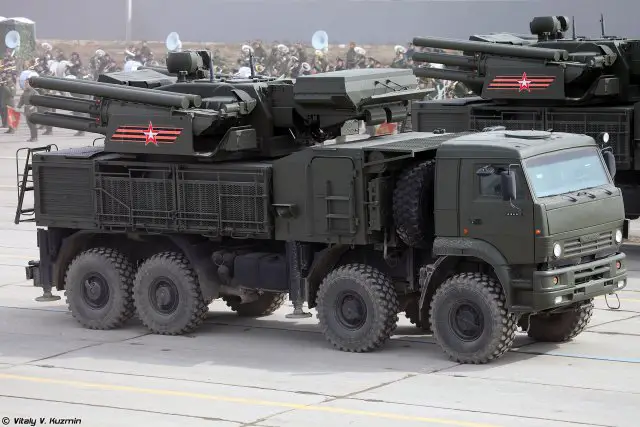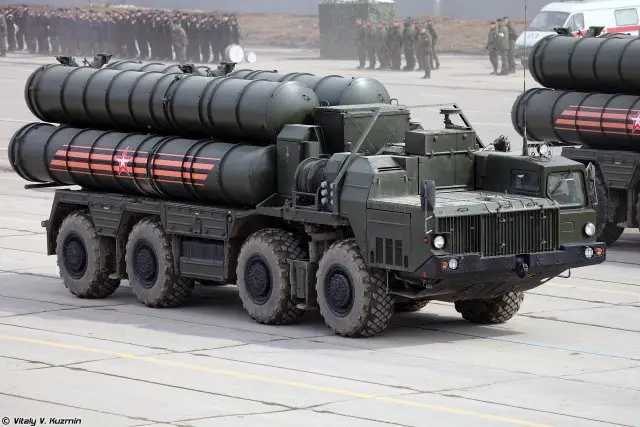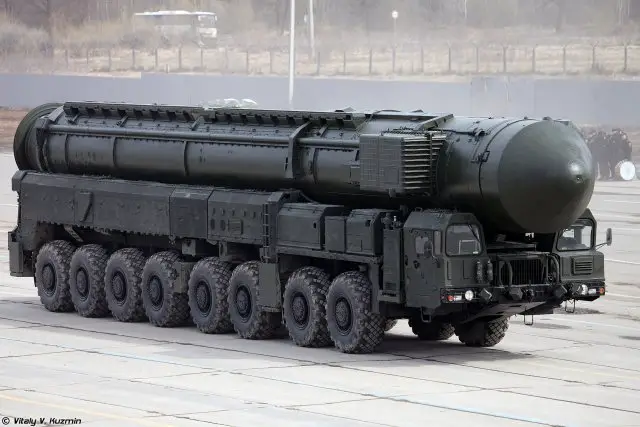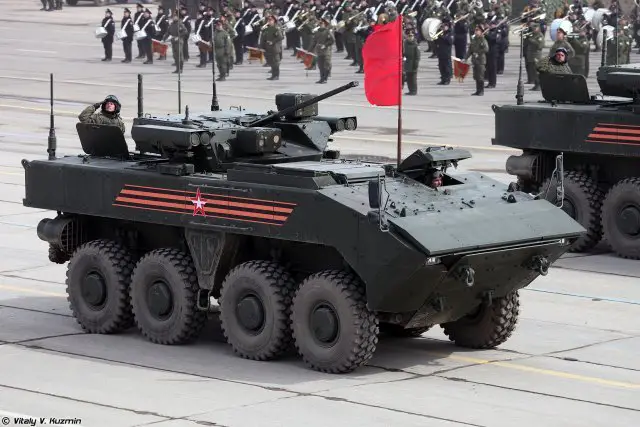|
|
|||
|
Defense & Security News - Russia
|
|||
|
|
|||
|
Analysis Pictures : Combat vehicles - armored - air-defense - tanks Russia Victory Day parade 2017
|
|||
|
Analysis and Pictures by Army Recogntion online defense and security magazine editorial team about all the new military equipment, armored, main battle tanks and air-defense systems at the Russian Victory Day parade 2017 in Moscow, Russia. The annual parade is held May 9 and marks the Allied victory in World War II at the Eastern Front, on the same day as the signing of the German act of capitulation to the Allies in Berlin, at midnight of 9 May 1945.
|
|||
|
|
|||
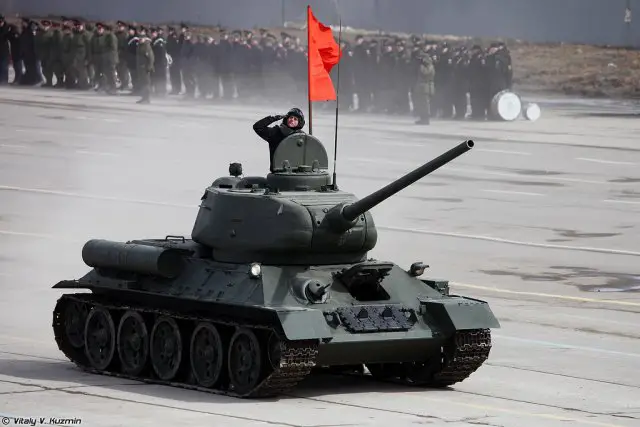 T-34 Main Battle Tank |
|||
|
|
|||
|
The T-34 was a Soviet medium tank that had a profound and lasting effect on the field of tank design. Although its armour and armament were surpassed later in the war, it has often been credited as the most effective, efficient and influential tank design of the Second World War. The T-34-85 (German designation: T-34/85) was a major improvement with an 85 mm gun in a three-man turret.
|
|||
|
|
|||
|
|
|||
|
The Tigr-M or GAZ-233114 (Here presented with the Arbalet-DM Remote Controled Weapons Station ) is an improved version of the standard 4x4 light tactical vehicle Tigr GAZ-2330. The vehicle is produced by the Russian Defense Company Arzamas Machinery-Plant, a Military Industrial Company subsidiary, keep on being refined continuously.
|
|||
|
|
|||
|
|
|||
|
The Tigr Kornet-D is the latest version of anti-tank guided missile carrier vehicle which enters in service with the Russian armed forces. The vehicle was unveiled for the first time during the rehearsal for the Victory Day military parade in April 2015. The Kornet-D weapon station is mounted on a Tigr-M GAZ-233116 4x4 multi-role, all-terrain light armoured vehicle manufactured by the Russian Company Military Industrial Company (BMK). Some few years ago, BMK has also proposed Tigr vehicle fitted with Kornet-EM weapon station.
|
|||
|
|
|||
|
|
|||
|
The Ural-63095 Typhoon also called Typhoon-U was developed under a request from the Russian Ministry of Defence, its a new armoured truck personnel carrier which involve lot of Russian defence companies. The Ural-63095 Typhoon was unveiled in September 2010.
|
|||
|
|
|||
|
|
|||
|
Kamaz-63968 Typhoon also called Typhoon-K is a family of Russian multi-functional, modular, armoured, mine resistant MRAP vehicles. The Typhoon family is part of Russia's Typhoon program launched in 2010. Both Kamaz and Gaz-Group are taking part in Typhoon program and develop their own family of vehicles. Kamaz-63968 6x6 Typhoon-K (Taifun) has a mass of 21 tonnes and can carry up to 16 people in its personnel compartment.
|
|||
|
|
|||
|
|
|||
|
The Kurganets-25 BMP is the IFV (Infantry Fighting Vehicle) variant of the Kurganets family designed and developed by the Russian Defense Company Kurgan Machine-Building Plant to create a new family of light tracked armoured vehicle. The Kurganets-25 is equipped with an electrically powered unmanned turret mounted in the centre of the hull. The turret is armed with the 2A42 30mm automatic cannon. A 7.62mm coaxial PKT machine gun is mounted to the left side of the main armament. Two launchers of anti-tank guided missile Kornet-EM are mounted on each side of the turret.
|
|||
|
|
|||
|
|
|||
|
The BMP-3 is a Soviet tracked amphibious infantry fighting vehicle, successor to the BMP-1 and BMP-2, which entered service with the Soviet army in 1990 and made its first public appearance the same year. The main armament of the BMP-3 is one 100mm 2A70 semi-automatic rifled gun / missile launcher, which is stabilised in two axes and can fire either 3UOF HE-FRAG rounds or 3UBK10 anti-tank guided missiles.
|
|||
|
|
|||
|
|
|||
|
At the victory day parade 2017,Russian army unveils new version of T-72B3 fitted with new armour package during the rehearsal for the military parade of May 2017. The T-72B3 is now the backbone of the Russian army offering more fire power, protection, mobility and command controllability. The main armament of the T-72B3 is a 125mm 2A46M-5 smoothbore gun fitted with a light-alloy thermal sleeve and a bore evacuator. |
|||
|
|
|||
|
|
|||
|
The T-14 Armata is the newest Russian main battle tank. The T-14 Armata was unveiled for the first time to the public during the military parade in Moscow for the Victory Day, May 9, 2015. The T-14 Armata is equipped with an unmanned turret and all the crew is located at the front of the hull. The new unmanned remote turret of Arama T-14 would be equipped with new generation of 125mm 2A82-1M smoothbore gun with an automatic loader and 32 rounds ready to use. The main gun can fire also new laser-guided missile with a range from 7 to 12 km.
|
|||
|
|
|||
|
|
|||
|
The 2S35 Koalitsiya-SV is a new generation of Russian-made self-propelled tracked howitzer based on the 2S19 chassis fitted with a new turret. The 2S35 Koalitsiya-SV tracked self-propelled howitzer is armed with the new 2A88 cannon 152mm which is under development. The 2S35 is able to fire a new generation of 9K25, the 152 mm Krasnopol laser-guided projectile which has a maximum range of 20 km.
|
|||
|
|
|||
|
|
|||
|
The 2S19 MSTA-S is the standard self-proprelled howtizer of the russian army, first production vehicle were completed in 1989 to replace the 52 mm 2S5 self-propelled artillery systems. The Main armament of 2S19 comprises a long-barreled 152 mm gun, the 2A64, fitted with a fume extractor and a muzzle brake.
|
|||
|
|
|||
|
|
|||
|
The BTR-82a is an upgraded version of the BTR-80A wheeled armored vehicles. In December 2008, Russia's Military Industrial Company (MIC) was already testing the prototypes which were unveiled in December 2009 The firepower of the BTR-82A is increase by the use of a new unified fighting module with electric drive armed with one 2A72 30mm cannon coupled with a 7.62 mm machine gun. The turret is fully stabilized on the two axes and fitted with new sights. The BTR-82 can fire on the move in day and night operations..
|
|||
|
|
|||
|
|
|||
|
Iskander-M Missile SS-26 Stone is a short range tactical missile system developed and produced in Russia. The system replaces the Oka SS-23 SPIDER which had been terminated under the Intermediate Nuclear Forces (INF) Treaty. Development of the system was undertaken by the Kolomna Engineering Design Bureau development during the 1990s under the project name "Tender". The Iskander-M have a Range of 400 km with a potential for extension to INF Treaty violating of 500 km.
|
|||
|
|
|||
|
|
|||
|
The Buk-M2 (NATO name SA-17 Grizzly) is a russian made mobile medium-range surface-to-air missile (SAM) system designed to defend field troops and logistical installations against air threats. The Buk-M2 can engage a wide variety of targets from aircraft to missiles flying at an altitude of between 10 and 24,000 m out a maximum range of 50 km in given conditions. The SA-17 Grizzly can engage simultaneous of up to 24 targets flying from any direction.
|
|||
|
|
|||
|
|
|||
|
The TOR-M2U is an upgraded version of the TOR-M2 short-range air defense missile system. The TOR-M2U is equipped with a new battlefield missile system with better algorithms to recognize, classify and prioritize targets and able to engage four threats simultaneously. The TOR-M2U can destroy moving enemy targets within the range of 12 km and at altitudes from 10 m to 1,000 m.
|
|||
|
|
|||
|
|
|||
|
The TOR-M2DT is a Russian-made short-range air defense missile system using the TOR-M2 missile launcher station. The system is especially designed to be used for Arctic region based on the chassis of the DT-30PM tracked all-terrain vehicle which consists of two tracked vehicle units linked by a steering mechanism.
|
|||
|
|
|||
|
|
|||
|
The Pantsir-SA is a new Russian-made short-range air defense missile system using the Pantsir-S1 weapon station. The system is especially designed to be used for Arctic region based one the chassis of the DT-30PM tracked all-terrain vehicle which consists of two tracked vehicle units linked by a steering mechanism. The second vehicle is used to carry the Pantsir-S1 weapon station.
|
|||
|
|
|||
|
|
|||
|
The BTR-MDM Rakushka is a further development of the BTR-MD airborne tracked multi-role armoured vehicle. The BTR-MDM was unveiled for the first time during the 9th International Exhibition of Arms, Military Equipment and Ammunition Russian Arms Expo which was held from 25 - 28 September 2013 in the city of Nizhny Tagil, Russia.
|
|||
|
|
|||
|
|
|||
|
The BMD-4M is the latest generation of Russian-made airborne armoured infantry fighting vehicle that can be para-dropped to provide firepower and support for airborne troops. It is an upgraded variant of the BMD-4 (BMD-3M). The BMD-4M is fitted with a two-man turret armed with a 2A70 100mm caliber gun, coupled to a 30mm 2A72 cannon and a 7.62mm PKT coaxial machine gun mounted to the right of the main armament. The 100mm gun uses an automatic loader with 34 rounds of 100mm ready to fire and 18 in reserve.
|
|||
|
|
|||
|
|
|||
|
The Pantsyr-S1 (SA-22 Greyhound NATO code name) is an air defense missile / gun system designed and manufacturec by the Russian Defense Companies KBP Instrument Design Bureau and Ulyanovsk Mechanical Plant. The armament of Pantsir-S1 consists of twelve 57E6 surface-to-air guided missiles and two 2A38M 30-millimetre automatic guns developed from the two-barreled 30mm GSh-30 gun. It is provided with multi-range radar capable of detecting aerial targets with effective surface of dispersion of up to 2-3 square meters at a distance of more than 30 kilometers and track them down from a distance of over 24 kilometers.
|
|||
|
|
|||
|
|
|||
|
The S-400 Triumph is a long range surface-to-air missile systems produced by Almaz-Antey. The S-400 entered service with the Russian Armed Forces on April 28, 2007, replacing the S-300 air defense system. The possibility of using AD missiles with various effective ranges ensures the system modular capability that makes it possible to set up layered air defense and non-strategic anti-missiles defense systems. The S-400 missile has a maximum range of 400 km and can hit all air targets wit high accuracy.
|
|||
|
|
|||
|
|
|||
|
The Yars RS-24 Is a Russian-made mobile nuclear intercontinental ballistic missile which can be mounted on truck carrier or deployed in silos. The first production of Yars began in 2004. The layout of the vehicle is similar to the Topol-M SS-27. The missile RS-24 is a three-stage, solid propellant, MIRV-capable (Multiple Independently Targetable Reentry Vehicles) ICBM (InterContinental Ballistic Missile) with a range of 10,500 km. The missile uses a guidance upgraded system of the inertial and Glonass system used in the RS-12M2 (Topol-M SS-27) missile. The accuracy is expected to be around 250 m CEP (Circular Error of Probability). RS-24 is expected to have a minimum range of 2,000 km, and a maximum range of 10,500 km. The RS-24 missile can be armed with up to 10 warheads.
|
|||
|
|
|||
|
|
|||
|
The K17 Boomerang or Bumerang is a new development of 8x8 armoured vehicle personnel carrier launched by the Russian defense industry to replace the old BTR family used by the Russian armed forces. During the International exhibition of arms and military equipment RAE 2013 in Nizhny Tagil, the project of the vehicle was showed only for the Prime Minister of Russia. The Bumerang K-17 is equipped with an electrically powered unmanned turret mounted in the centre of the hull. The turret is armed with the 2A42 30mm automatic cannon. A 7.62mm coaxial PKT machine gun is mounted to the left side of the main armament. Two launchers of anti-tank guided missile Kornet-EM are mounted on each side of the turret.
|
|||
Analysis Pictures : Victory Day Parade 2017 Russia Combat vehicles - armored - air-defense systems - tanks 82604173
- Posted On





